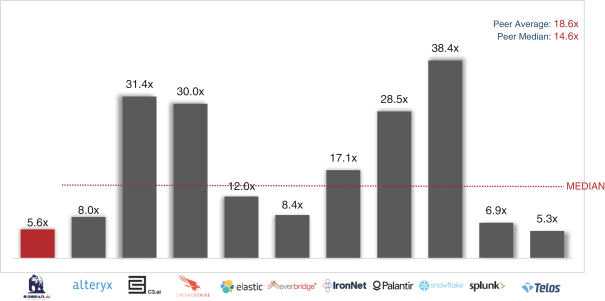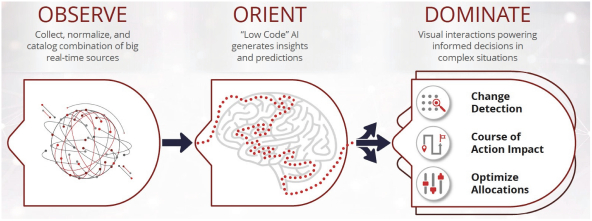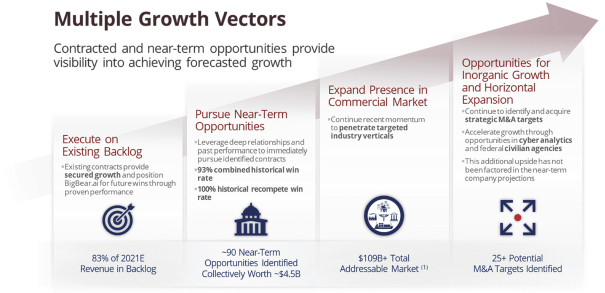functions of our business, including our cloud-based services, customer relationship management activities, billing and order management, and financial accounting services. Additionally, we rely
on computer hardware purchased in order to deliver our software and services. We do not have control over the operations of the facilities of the third parties that we use. If any of these third-party services experience errors, disruptions,
security issues, or other performance deficiencies, if they are updated such that our software become incompatible, if these services, software, or hardware fail or become unavailable due to extended outages, interruptions, defects, or otherwise, or
if they are no longer available on commercially reasonable terms or prices (or at all), these issues could result in errors or defects in our software, cause our software to fail, our revenue and margins could decline, or our reputation and brand to
be damaged, we could be exposed to legal or contractual liability, our expenses could increase, our ability to manage our operations could be interrupted, and our processes for managing our sales and servicing our customers could be impaired until
equivalent services or technology, if available, are identified, procured, and implemented, all of which may take significant time and resources, increase our costs, and could adversely affect our business. Many of these third-party providers
attempt to impose limitations on their liability for such errors, disruptions, defects, performance deficiencies, or failures, and if enforceable, we may have additional liability to our customers or third-party providers.
We have experienced, and may in the future experience, disruptions, failures, data loss, outages, and other performance problems with our infrastructure and
cloud-based offerings due to a variety of factors, including infrastructure changes, introductions of new functionality, human or software errors, employee misconduct, capacity constraints, denial of service attacks, phishing attacks, computer
viruses, malicious or destructive code, or other security-related incidents, and our disaster recovery planning may not be sufficient for all situations. If we experience disruptions, failures, data loss, outages, or other performance problems, our
business, financial condition, and results of operations could be adversely affected.
Our systems and the third-party systems upon which we and our
customers rely are also vulnerable to damage or interruption from catastrophic occurrences such as earthquakes, floods, fires, power loss, telecommunication failures, cybersecurity threats, terrorist attacks, natural disasters, public health crises
such as the COVID-19 pandemic, geopolitical and similar events, or acts of misconduct. Moreover, we have business operations in San Diego, California, which is a seismically active region. Despite any
precautions we may take, the occurrence of a catastrophic disaster or other unanticipated problems at our or our third-party vendors’ hosting facilities, or within our systems or the systems of third parties upon which we rely, could result in
interruptions, performance problems, or failure of our infrastructure, technology, or software, which may adversely impact our business. In addition, our ability to conduct normal business operations could be severely affected. In the event of
significant physical damage to one of these facilities, it may take a significant period of time to achieve full resumption of our services, and our disaster recovery planning may not account for all eventualities. In addition, any negative
publicity arising from these disruptions could harm our reputation and brand and adversely affect our business.
Furthermore, our software are in many
cases important or essential to our customers’ operations, including in some cases, their cybersecurity or oversight and compliance programs, and subject to service level agreements (“SLAs”). Any interruption in our service, whether
as a result of an internal or third-party issue, could damage our brand and reputation, cause our customers to terminate or not renew their contracts with us or decrease use of our software and services, require us to indemnify our customers against
certain losses, result in our issuing credit or paying penalties or fines, subject us to other losses or liabilities, cause our software to be perceived as unreliable or unsecure, and prevent us from gaining new or additional business from current
or future customers, any of which could harm our business, financial condition, and results of operations.
Moreover, to the extent that we do not
effectively address capacity constraints, upgrade our systems as needed, and continually develop our technology and network architecture to accommodate actual and anticipated changes in technology, our business, financial condition, and results of
operations could be adversely affected. The provisioning of additional cloud hosting capacity requires lead time. AWS and other third parties have no obligation to renew their agreements with us on commercially reasonable terms, or at all. If any
third parties increase pricing terms, terminate, or seek to terminate our contractual relationship, establish more favorable
68









